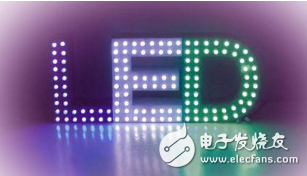In the wake of the industry restructuring and market adjustments in 2016, China's LED sector has seen a growing concentration among key players. By 2017, the LED chip market was dominated by a few major companies, with the top three—Sanan, Jinghong, and Huacan—collectively holding around 50% of the market share. Notably, Sanan stood out with nearly 30% of the market, reflecting its strong position in the industry.
The year 2017 marked a new phase of expansion for the LED chip industry. According to the Jibang Consulting LED Research Center, the demand for LED chips had risen significantly due to increased production capacity from LED packaging manufacturers in mainland China since 2016. As a result, many domestic chip manufacturers resumed their expansion strategies.

According to LEDinside data, there were 401 new MOCVD installations worldwide in 2017 (equivalent to K465i), marking the highest level of capacity expansion since 2011. Yu Yu, an associate researcher at LEDinside, noted that Chinese chip makers such as Sanan, Huacan, and Aoyang Shunchang had significant expansion plans in 2017. It was estimated that once these new capacities came online, mainland China’s MOCVD capacity would account for 54% of the global total.
Chu Yuchao pointed out that the expansion of production by Chinese LED chip manufacturers was largely driven by rising demand from downstream LED packaging firms. In addition, Guangdong and the Pearl River Delta had traditionally been the hub for LED companies. However, increasing labor and land costs have prompted many packaging manufacturers to relocate to second-tier cities. To attract these firms, local governments have introduced various incentives, aiming to recreate the expansion boom seen in 2010.
It’s important to note that the latest wave of government subsidies isn’t limited to upstream chip manufacturers. Local governments are now also supporting the LED packaging industry and related sectors, aiming to stimulate downstream demand and boost the need for upstream chip suppliers.
Unlike previous expansion trends, where smaller enterprises rushed to build chip factories to take advantage of subsidies, this round of growth is primarily driven by the increased capacity of both chip and packaging manufacturers in mainland China. With continued government support, Chinese LED companies are accelerating their production expansions, which has put pressure on global competitors. Larger firms are either reducing their scale or increasing their reliance on manufacturing partners in China, making the trend of large-scale expansion more evident.
As a result, the landscape of the Chinese LED industry continues to evolve, with a stronger focus on efficiency, cost control, and strategic regional development.
Core Components & How It WorksÂ
integrated amps,integrated stereo amplifier,integrated stereo amp,2000 watt amplifier,class a amp
Guangzhou Aiwo Audio Technology Co., LTD , https://www.aiwoaudio.com